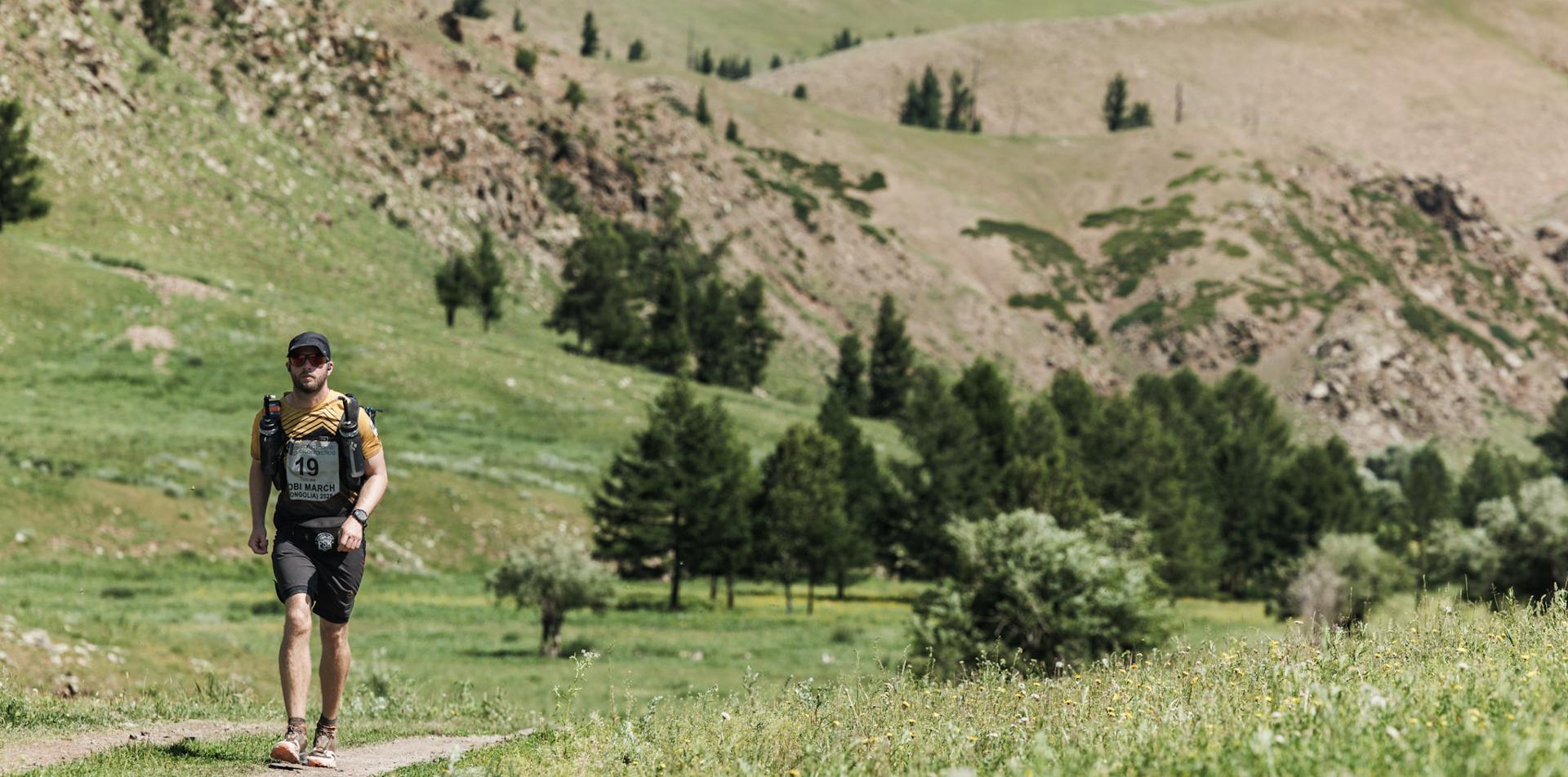Why and How You Should Fundraise
Simon, who joined the 4 Deserts Club in Antarctica in November, fundraises for two children’s charities close to his heart: Operation Breakthrough, which tackles juvenile delinquency through sporting opportunities for vulnerable teenagers, and St Baldrick’s Foundation, which works in partnership with the Children’s Cancer Foundation to fight childhood cancer.
“Because I’m a police officer, juvenile crime is something that I’ve been involved with for a long time. You see the results firsthand – out of the 10,000 kids in the program, only 5 have reoffended,” he explains. “And spending time with child survivors of cancer is always a very humbling experience.”
Simon attributes his authentic and genuine approach to his fundraising success. But it’s also been about hard work and effective fundraising skills. Simon recently spoke at TheRacingPlanet store and shared his insights on reaping the most results for your chosen cause.

1. Chose a cause that has meaning for you. “Find something you can emotionally buy into,” says Simon, “otherwise it will come across to your donors and they won’t buy into it either”. If you are able, take the opportunity to meet with beneficiaries so that you understand the impact of your efforts.
2. Be specific and unique in your goals. There are a number of charities around the world working towards very worthy causes – why should someone support you? Successfully engaging your potential donors – whether they are corporates, friends, family or your local community - requires a specific message that resonates. For example, the money raised by Simon has enabled Operation Breakthrough to buy a bus, allowing them to transport children to and from training sessions.
3. Don’t reinvent the wheel. Most charities have existing donor networks. “Use them, but don’t abuse them,” Simon warns. Do your research and find out who already supports your charity and whether your project would be of interest. If not, don’t waste time by approaching them. If it is, use the existing networks as a platform to launch into fundraising, either through individual pledges or by piggybacking off existing fundraising events.
4. Get legitimate. Ask your charity to appoint you as an honorary ambassador or official fundraiser. This can be as simple as listing you on their website or including you in their charity materials, such as brochures. When potential donors (particularly corporates) do their research, seeing your name on the charity’s resources will reinforce the genuineness of your goals.
5. Your cause doesn’t have to be money. "Never underestimate the power of a cause,” says Simon. “It could be rounding up second hand clothes or simply raising awareness." Similarly, sponsors can also donate their services, raffle items or provide discounts, which can then be auctioned off. In a recent fundraising experience, Simon was able to help a family that unexpectedly lost a loved one by encouraging people to transfer their Air miles, allowing the family to travel back to the UK.
6. (Don’t) show me the money. Actually receiving and managing money for your charity project can be more difficult than you may think. If possible, avoid personally handling money and have your donors provide funds directly to your charity. There are also online options available – such as Just giving and Ammado – which provide an easy way to get funds from all over the world. PayPal is another option, but in Simon’s experience they will take a commission on your funds unless you demonstrate that you are a charity (which involves writing a letter).
7. Get Facebooking, twittering and all sort of social networking. "Love it or hate it, I cannot stress how important social networking is," says Simon. A Facebook profile or twitter account takes only minutes to set up and instantly connects you to a broad audience. Facebook also provides statistics for pages with more than 30 “Likes”, which is useful (not to mention marketable) information.
8. Approach corporate donors, but do it wisely. Nabbing a corporate donor will see you reach your goals in no time, but it also requires a lot of hard work – and luck!
Simon suggests researching and profiling potential donors to determine whether your fundraising goal fits into their own. "I trawled websites that had corporate social responsibility (CSR) consistent with my goals and that narrowed my scope.”
When creating a fundraising proposal, be commercial and understand what you can offer. Corporate donors are most interested in branding and exposure, but content (such as articles on or photos of your race) for websites and company materials is also useful. Make sure you check the race rules and ensure what you are offering (i.e. branding) is within the race rules.
Next, approach potential corporate donors in waves. Build a list of tier 1, 2 and 3 donors. When you receive a rejection letter, send out the next tier, or send a reminder before sending out the next wave. This will avoid you having to choose between donors.
Lastly, take every rejection as an opportunity to get feedback and refine your message. “If you get a rejection letter, it doesn't need to end there," says Simon. Despite rejections from two large corporates, after a follow up Simon was able to obtain a significant discount with one sports apparel company and a beverage donation which he’s used at other events.
9. Develop eye-catching materials that speak to your cause. Where possible, Simon uses hard copy, colourful materials which include information about him, past RTP races (with photos) and the charities he benefits.
If sending by email, he keeps his material short (no more than a page) and in PDF (to avoid it being amended by anyone). But Simon suggests that he’s had most success by approaching companies through ‘snail mail’. “Contact the company secretary and ask for the contact of the person responsible for fundraising and send them a letter directly,” advises Simon.
Simon also suggests that competitors get silicon bands made up to wear during the race. They make for a great photo and serve as a constant reminder while en-route.
Finally, there is no better way to top off a great race or training photo than a plastic banner. “They’re not expensive to have made and you can use it for your finishing photo each day,” he says.
10. Keep your charity and sponsors happy. Simon reminds competitors that fundraising doesn’t finish when the race does. It’s important to make sure you are continuously marketing during the event – such as taking photos and keeping notes to help you create content later – which can be used by your donors and charity later.
He suggests that you plan your photos up front, and don’t shy away from all the gruesome ones, like blister shots. “You want to show that you went that extra mile,” says Simon. “The hardship element distinguishes you from an egg and spoon race."
Finally, make sure that you follow up with any donor or charity promises on your return and never underestimate the value of sending a personalized “thank you”. You never know where your RacingThePlanet journey will take you or what fundraising goals lie on the horizon after you’ve successfully fundraised for your first project.
You can also read more fundraising tips here.







 Newsletter
Newsletter
 Online Store
Online Store





